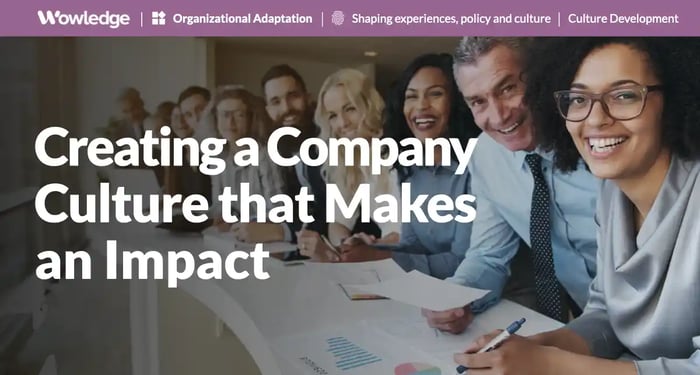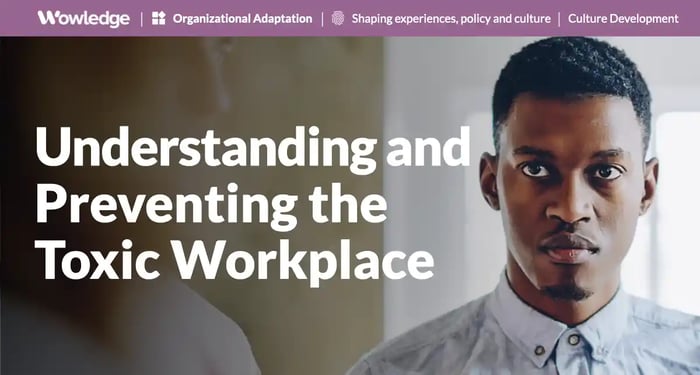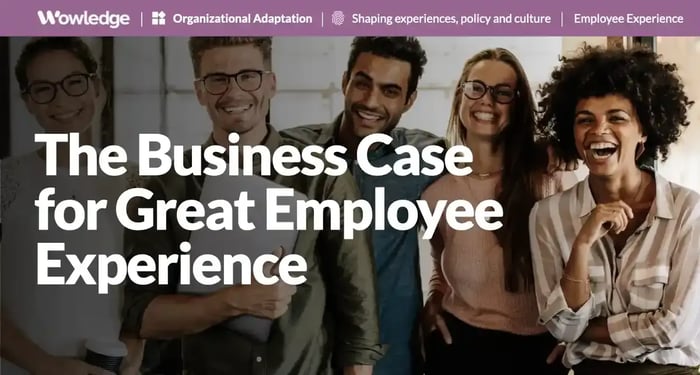Corporate culture, often described as the personality of an organization, encompasses the values, beliefs, behaviors, and practices that define the daily operations and overall atmosphere within a company. Creating a company culture is a critical aspect of any business, influencing everything from employee satisfaction and retention to productivity, innovation, and, ultimately, the organization's success. Corporate cultures can vary widely, from highly formalized and structured environments to more casual, flexible workplaces, each with its unique approach to leadership, communication, and decision-making processes. Establishing a robust corporate culture requires intentional effort and strategy that aligns with the organization's goals. By fostering a positive and cohesive culture, companies can enhance their performance and attract and retain top talent, creating a competitive advantage in today's dynamic business landscape.
Defining Culture
Organizational culture refers to organizational members' collective values, beliefs, and principles. It is a product of such factors as history, product, market, technology, strategy, type of employees, management style, and national culture. Culture includes the organization's vision, values, norms, systems, symbols, language, assumptions, beliefs, and habits. It is often considered the "social glue" that keeps the organization together, guiding employees about the focus and boundaries of work behavior, interpersonal interactions, and process management. It is viewed as what makes an organization and its work environment unique, and creating a company culture that is well-aligned with the business is critical to success.
Despite how some experts have written about the topic, culture does not necessarily imply a pleasant or positive work environment. There certainly exist toxic or otherwise negative cultures where a lack of respect for the individual and their needs exists. While ample evidence points to the value of a positive, humane, and constructive culture as a driver of substantial business gains, unfortunately, organizational success (e.g., growth, market leadership, revenue profitability) often comes despite the presence of a negative internal culture.
A comment on values
Values alone do not define culture and, on their own, cannot drive the same outcomes. While values are often stated as the necessary statement leading to behaviors that define a culture, research by MIT found no relationship between stated values and actual corporate culture. The issue seems to be due to a lack of operationalizing those values (e.g., paying lip service to them) into measurable and observable behaviors that can be evaluated in performance assessments, talent reviews, succession, and promotion discussions. That said, they certainly have their place in defining culture, predominantly as elements of a culture that is nurtured, supported, and reinforced through integration with talent processes.
Why culture is so important
Research provides ample reason for companies to focus on creating a company culture that is robust, positive, and consistent across their functions, business units, and locations. From a pure business results standpoint, powerful evidence comes from research reported in Fortune Magazine. For example, its “Fortune 100 Best Companies to Work For” outperformed the broader market by 16.5% in 2020, returning 37.4% compared to a 20.9% return for the Russell 3000® Index. In fact, those companies performed over three and a third (3.36X) times better from 1998 to 2022. That’s 24 years! Similarly, Gallup has found that a strong culture drives an 85% net profit increase over a period of five years.
There should be little surprise about positive returns on talent outcomes, but the research offers strong evidence. The same Gallup research found that creating a company culture defined by positive standards drives a 50-point increase in measured employee engagement rates within three (3) years and 25% growth in workforce size across the same timeframe. Others have demonstrated that companies whose employees report a positive culture are 3.8 times more likely to also have high engagement levels. In contrast, those who report high disengagement levels are 2.6 times more likely to see those employees resigning in search of an organization with a more positive culture. Similar findings from research by Randstad found that 38% of workers who report working in a toxic environment plan on leaving. In addition, 58% have resigned or plan on doing so due to negative office politics. Finally, research by Quantum Workplace shows that disengaged employees are 3.8 times more likely than their engaged counterparts to cite organizational culture as a reason for leaving.
Related work speaks directly to leaders' belief that creating a company culture is vital to its success. Research from Columbia Business School demonstrates the perception of its criticality to leaders, with 91% of executives stating the importance of culture and 79% citing culture as one of the top drivers of their organization’s value. It is, however, noteworthy that only 16% of the same executives report that their culture is sufficient and consider a lack of investment in building and maintaining the culture as the primary culprit.
That said, great promise can be drawn from employee insights that suggest the value of a robust and well-managed culture to the most desirable talent outcomes. For example, research has found that when positive cultural elements are evaluated highly by employees (such as integrity and trust), they are also associated with “higher productivity, profitability, better industrial relations, and a higher level of attractiveness to prospective job applicants.” Furthermore, workplace culture studies show that employees believe that a positive culture plays a major influence on their job performance, with significantly higher ratings for doing their best work (77%), driving their productivity and efficiency (76%), and their ability to best serve customers (74%).

Different types of organizational culture
Many cultural styles exist, with a wide range seen even within industries and segments, where one might expect to have more consistency due to similar economic or competitive pressures. However, we have seen that many organizations allow their leaders, processes, and infrastructure/systems to define the culture without recognizing the power they can exercise to proactively override those with solid management and people-facing excellence. Creating a company culture requires thoughtful consideration, planning, and design of the employee experience (EX), leadership directives, communications, job design, rewards and recognition, and employee development strategies. Those tend to communicate the values that an organization wants to express, which, in turn, should be designed to drive great company performance and resilience. As a result, many varieties of culture exist and can be difficult to pin down.
However, seminal research into organizational culture produced excellent insights into four major categories across industries and global geographies. They include:
Clan (or collaborative) culture
Where a familial style is prevalent, focused on loyalty and tradition, often positioning or viewing their leaders as father or mother figures. There tends to be great emphasis placed on both the customer and employee experiences, where the needs of each are considered top strategic priorities.
Market (or competitive) culture
Where results and winning are the primary focus. A strong emphasis on competition and goal achievement exists, with tough and demanding management considered a key to the unrelenting drive for success. Hiring the best and the brightest and rewarding those who rise to the challenge are hallmarks of the people strategy.
Adhocracy (or creative) culture
Where innovation and entrepreneurialism are prioritized. The drive for market trendsetting pervades the organization's management, emphasizing agility, experimentation, and risk-taking. These cultures tend to celebrate the individual, with personal initiative, creative solutions, and innovative product/service design being rewarded. They tend to have less formal and more fluid organizational structures.
Hierarchical (or controlling) culture
Where decision-making and work processes are highly structured and overseen. Reliability and excellence in process execution are most prized, and contributions and expectations of individual workers are tightly designed, managed, and controlled. Organizations are highly structured and have tightly managed chains of command.
There exist in the business press many references to “culture” that are actually either 1) “subcultures” or elements of a broader corporate culture (e.g., learning culture, customer service culture, innovation culture, data culture, continuous improvement culture, etc.) or 2) corporate values. Interestingly, as previously discussed, a value can be an important element of a culture. For example, research has demonstrated that nine (9) in particular are most commonly cited by leading companies and are shown to have the greatest impact on business and talent outcomes, including:
- Agility
- Collaboration
- Customer
- Diversity
- Execution
- Innovation
- Integrity
- Performance
- Respect
What is most important to understand is that there are many possible elements to creating a company culture, and the key is to define what values, elements, or traits of how the organization operates are most valuable and which ones can help move the organization forward to meet its primary vision and objectives.
The variables that create a great culture
So where does organizational culture come from? Insights developed by Great Place To Work from its ongoing surveying and data analysis from millions of employees offer excellent guidance to understanding the elements critical to creating a company culture that drives great results and, ultimately, where to focus for improvement.
What it found is that of all the ingredients that make up an organizational culture, the most important variables are how:
- Employees communicate with each other
- Decisions are made
- People are hired, promoted, and let go
- Employees are recognized
- Employees celebrate their work and each other
In other words, a company’s culture is largely driven by how people are treated, how they interact with each other, and how (and by whom) work decisions are made. This largely falls out as how well an organization supports a consistent employee experience, regardless of whether it promotes a more individualist/competitive or teamwork/collaborative environment. What seems to matter most is that reliable values permeate all people-centric decision-making, how they are managed and work together, and for what behaviors and outcomes they are rewarded (or otherwise). Such consistency is critical from a human expectation standpoint, as employees crave surety – “if I do [a], then [b] will happen as a result.” Remembering the four types of culture discussed above, it is important to understand that many of the positive attributes widely disseminated about positive and caring work environments may not fit neatly into the hierarchical (controlling) or market (competitive) cultures for many workers. For those who prefer highly competitive or structured work environments, the “care and feeding” models might not represent the best fit for them or their careers.
What is certain, however, is that organizations understand the culture that best fits their mission and preferred style and create a consistent experience across management and talent processes. The goal is that the selected culture is designed to contribute to employee satisfaction, loyalty, and a stable workforce that is aligned with the company's mission and values, leading to organizational stability and growth.

How to build a robust culture
Building a robust and resilient organizational culture requires a comprehensive approach that intertwines an organization's values, beliefs, behaviors, and systems. It engages leaders, HR experts, and internal ambassadors to communicate, promote, champion, and continuously monitor it. It also calls for them to evaluate the external and internal environments to adapt as the world evolves (socially, politically, legally, economically, etc.) to meet changing circumstances and pressures. Critical strategies to consider and leverage when establishing and maintaining a culture include:
1. Clarify business purpose
Articulate the reasons the organization exists and its role in the context of the business, industry, community/geography. Simplify the messaging around what value the organization is designed to deliver, who its stakeholders are, and its desired place in the world around it.
2. Define core values and mission
Start by clearly defining your company's core values, mission, and vision. These should reflect the essence of what the company stands for, how it wants to operate, and what it deems as most important to guide the behavior and decision-making within the organization.
3. Provide meaning and purpose
Employees are motivated by meaningful work and personal alignment with the company's mission and values. Highlighting the organization's purpose and its impact on society enhances the culture. Define jobs clearly, with multiple ways to explain how their individual job and work outputs contribute to 1) the company’s mission, 2) function/department goals and objectives, and 3) the betterment of the community or society.
4. Lead by example
Leadership is critical in shaping corporate culture. Leaders must embody the core values and mission of the company in their actions and decisions. This sets the tone for the rest of the organization and demonstrates commitment to the culture. Set expectations, hold managers accountable, and measure how well (and frequently) they act in accordance with those.
5. Hire for cultural fit
While skills and experience are important, it's crucial to consider how well potential employees align with your company's culture. Hiring individuals who share the core values and beliefs will strengthen the culture and contribute to a more cohesive team. Assess candidates based on behavioral examples, and have references provide input on the same values.
6. Foster open communication
Encourage open, honest, and respectful communication across all levels of the organization. This includes providing channels for feedback, addressing issues transparently, and ensuring that everyone feels heard and valued. Gallup found that it is an essential element of a strong culture to keep people well-informed and avoid rumor-sharing that distracts employees from focusing on their work.
7. Recognize and reward
Acknowledge and reward behaviors that align with your corporate culture. Recognition programs, whether formal or informal, reinforce the importance of cultural values and motivate employees to embody them. Embed values and expectations and the exhibition of key traits and values into selection criteria, performance expectations, promotional criteria, talent review criteria, succession standards, compensation program considerations, etc.
8. Provide development opportunities
Invest in employees' professional and personal development to demonstrate the importance of their continued growth and advancement as a pathway toward continued employment. Offering training, mentorship, and career advancement opportunities linked to areas of organizational growth and evolution ties them more closely to the purpose and value proposition of the business.
9. Build a sense of community
Create opportunities for employees to connect and build relationships beyond their work roles. Team-building activities, company events, and social gatherings can help foster a sense of belonging and strengthen the corporate culture. Link these to larger company successes, wins, and advances to communicate their role in the organization's growth.
10. Promote work-life balance
Encourage practices that support a healthy work-life balance to best meet the needs and preferences of the newer generations now dominating the labor market. Recognizing the importance of personal time and flexibility can improve employee satisfaction and well-being, contributing to a positive culture.
11. Measure, adapt, and evolve
Corporate culture is not static; it must evolve as the company grows and the external environment changes. Regularly assess the health of your corporate culture through surveys, feedback, and other metrics to build an understanding of the impact of culture on employee engagement, retention, and performance and identify areas for improvement. Be open to feedback and willing to adjust the culture to ensure it remains relevant and supports the organization's goals.
Relevant Practices & Tools
Emerging Diversity, Equity, and Inclusion Practices to Foster an Inclusive Culture. >
Diversity, Equity, & Inclusion (DEI) strategies are only successful if an organization can both 1) attract a diverse talent pool and 2) retain a diverse workforce... more »
Creating an Employee Experience that Bonds High Performers to the Organization. >
The employee experience constitutes the entire journey an employee takes with the organization. This includes everything from pre-hire to post-exit interactions... more »
Fostering a Culture that Embraces Change Through Active Employee Engagement and Reinforcing Organizational Mechanisms. >
The existing organizational environment is perfectly designed to produce the current behaviors and outcomes, regardless of whether those outcomes are the desired ones... more »
Building a Culture of Coaching and Mentoring that Creates a Continuous Learning and Improvement Environment. >
Establishing and managing a sustainable culture of coaching and mentoring is an integrated effort that builds an environment where continuous development and growth take center stage... more »
The External Environmental Scan Tool: Capture and Categorize Factors Outside of the Company’s Scope Impacting its Objectives. >
This template provides a structure for identifying key external topics that should be considered in a formal analysis of the business’s upcoming challenges... more »
About Wowledge
Wowledge is the expert-driven platform for lean teams building strategic HR programs. Members enjoy access to up-to-date best practices, step-by-step guides, tools, templates, and insights to accelerate the design and implementation of all key HR programs and processes.
Since each organization has unique characteristics, needs, and aspirations, Wowledge's practices are developed utilizing an exclusive stage-based approach – from Core to Advanced to Emerging – that reflects distinct levels of sophistication to meet our members where they are.
Build strategic HR programs with refreshingly easy-to-follow best practices.
Get started for FREE! Learn more.










